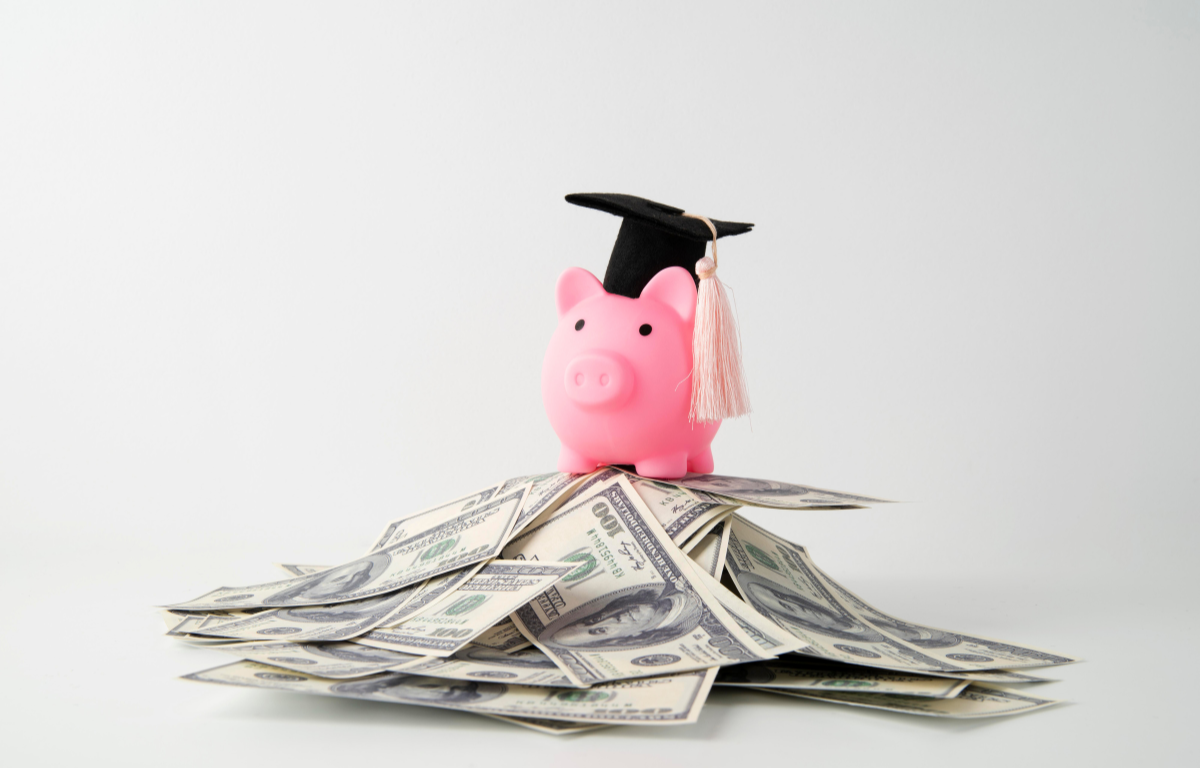Table of Contents
When you qualify for financial assistance, you can be given loans as part of your school’s financial aid deal. A loan is money you borrow and must pay back in interest. You should make sure you understand who makes the good student loans and the terms of the loan before you plan to take out the credit. Credits may be issued by students from the federal government, private outlets, such as a bank or financial institution, or other organizations. Federal loans, known as student loans, generally benefit more than loans made by banks or other private sources. Learn more about the definition of federal student loans in this blog.
Background Of The Best Federal Student Loans
The first effort by the U.S. government to provide good student loans arrived in 1958 by the National Security Education Act (NDEA), in reaction to the alleged danger faced by the Soviet space program. In order to make technological advances, the government needed to enroll more post-secondary students, and the NDEA proposed a loan scheme to do so.
Yet student loans, as we know them today, started with the Higher Education Act (HEA) of 1965. The Federal Student Aid Program has been introduced to support students to meet their aspirations of college, graduation, and technical education.
The scheme was further refined in 1980, which saw HEA re-authorisation culminating in the development of PLUS loans.
The same year, the Federal Student Aid (FSA) eligibility service was established to form part of the application process for federal grants and scholarships. The student aid program is the biggest student loan program in the United States and processes over 20 million applicants a year. The federal student loans offer over $120 billion in financial assistance to borrowers.

What Kind Of Student Loans Are Applicable To Federal Students?
William D. Ford’s Direct Loan program is the Federal Direct Loan program of the United States Department of Education. In the United States, in this scheme, Your landlord is the Ministry of Education. Direct loans are available in four ways:
- Direct subsidized loans: In order to access direct subsidized loans, undergraduate students with financial needs will be eligible. The Department of Education pays interest on these loans if you are in school for at least half the time, even when you quit school for a six-month grace period. For direct loans, there are credit caps and the sum you may borrow is calculated by your school.
- Direct unsubsidized loans: Graduate and graduate students may not need to show a financial need to access direct unsubsidized loans. Such loans often come with credit caps, and the school can decide how much you will repay on the basis of the rest of the financial support plan and the cost of attendance. You are liable for paying the interest that accrues on unsubsidized loans. When you can not submit interest payments when you are in school or during the probation period, the debt earned would be applied to the principal amount.
- Direct PLUS loans: If you are a college student or parent of an undergraduate student, you are entitled to apply for grad PLUS loans. Unlike subsidized and unsubsidized loans, PLUS loans include a credit review. These loans are open to investors who may not have an unfavorable background history—meaning that you can’t have defaulted, fallen through collections, seen a mortgage, or other conditions in the past several years.
- Federal Family Education Loan Program: FEFL stopped lending after June 30, 2010, but enabled private lenders to make education loans supported by the federal government. The overhaul impacted Subsidized Stafford Loans, Unsubsidized Stafford Loans, FFEL PLUS Loans, and FFEL restructuring loans.
- Direct consolidation loans: Borrowers who have existing federal loans may qualify for a direct consolidation loan. Consolidating into a direct consolidation loan is free of charge and helps you to ease your federal student loan repayment by merging your loans into one monthly payment.
How much money can a person borrow from federal loans to students?
It depends on whether the person is a bachelor, a college student.
If the person is a college student, you can take a cumulative borrowing volume of $5,500 to $12,500 yearly from direct subsidized loans and non-subsidized direct loans based on the academic year and the status of your dependence.
The person will repay up to $20,500 annually in Unsubsidized Direct Loans, whether you are a college or advanced student. Direct PLUS loans may be used, as defined by the institution, to fund the majority of the cost of the education, but not to cover any financial assistance.
The person will get a Direct PLUS loan for the outstanding education expenses of your infant, as set by the school, which is not covered by any financial assistance because you are a parent of a dependent graduate.
We’ll fund your overseas education to make it hassle-free! Fill the form on this page!
Why Should You Go For Federal Student Loans?
Investment of the future is federal student loans. You shouldn’t dread taking the best federal student loans, but you should be clever. In contrast to other choices you can consider while paying for college, federal loans provide several advantages to students:
- The federal student loan limit is set and typically smaller than that on private credits—and far lower than the credit card interest rate!
- To access any federal student lending, there is no requirement for a background check or a co-signer.
- Until you leave university or fall below halftime, you do not have to start repaying your federal student loans.
- If you show a financial need, when you are in school or after school, the government pays the interest on those forms of loans.
- Federal student loans offer adjustable refund arrangements as well as potential alternative opportunities for the loan payments if payments are tough.

When The Person Takes Federal Student Loans, What Do He/She May Consider?
It is necessary to understand when you take out a loan that a loan is a legitimate responsibility and is responsible for the repayment of the money you borrow with interest. Although you do not repay your federal student loans completely, you need not wait for your obligations as the creditor to be understood.
Be an accountable creditor. Keep note of the amount of money you borrow. Consider just how much you can afford to refund the way your debt will affect your future finances. When you graduate, your student loans can be a small percentage of your earnings, so it is crucial to not borrow more from your school expenses than you need.
Study in your sector to start wages. Ask your school about the wages of new student graduates to see how much you can earn the following graduation.
What Are The Downsides Of Federal Student Loans?
- Small loan amount: Based on your grade level and dependence status, you may borrow up to $5,500 from Direct Subsidized Loans or $20,500 from Direct Unsubsidized Loans (less than any subsidized loans taken out in the same period). PLUS Loan borrowers can, however, take out a loan at the cost of attendance (less other aid you receive).
- Wage garnishment potential: the government can take interest of your income or tax refund if you default on your federal student loan.
How To Apply For Federal Student Loans?
It’s free to apply for a federal student loan. What you need to do is complete the Federal Student Aid (FAFSA®) application. The FAFSA also decides your eligibility for other federal student support, such as grants and work-study, in addition to federal student loans. To obtain federal student aid, you need to notify the FAFSA every year that you are enrolled in college. The quickest and cheapest way to file the FAFSA is online. Within 3-5 days, the submission will be reviewed.
Federal student loan processing: You can send in a paper application as well, although it will take around 7-10 days to process it.
The FAFSA submission is completely free. If you’re required to pay, which indicates you’re in the wrong place.

What Happens After Your FAFSA Submission?
After you submit the FAFSA, the Government will give you the Student Aid Report (SAR) which provides you with basic details on your eligibility for federal student aid.
This information may be accessible to the colleges that you have included with the FAFSA, and they may use it to assess the amount of federal grants, work-study, and loans that you can apply for.
Colleges that you are eligible for will give you a financial assistance offer outlining the financial assistance that you are entitled to receive—including federal student loans, scholarships, and work-study.
Just as the expense of attending each college varies, the amount of federal student aid public service loan forgiveness you obtain from each college will also differ.
FAQs
1.How do I know if my student loan is federal or private?
The name of your college loan provider and the name of your federal student loan programme will appear at the top of a student loan bill.
2.Are all student loans federal?
No, all loans are not federal loans. Federal student loans and private student loans are the two main categories. The federal government provides funding for loans such as federal parent and student loans. Private student loans are nonfederal loans provided by lenders such as banks, credit unions, state agencies, or educational institutions.
3.What type of federal student loan do I have?
Look at the promissory note and application, or sign into your account on studentaid.gov, to determine what kind of federal loan you have. The name of the programme should be displayed at the top of your monthly statement, which you may also check.
4.Is a federal student loan secured or unsecured?
Federal students loans can be both, secured or unsecured. Unsecured loans, or loans for which collateral is not required, ask the borrower to give no security in exchange, whereas, secured loans are loans where collateral is needed.










0 Comments